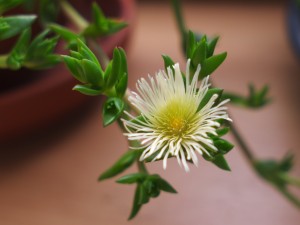Traditional herbal medicine has been around, well, since the time that people were alive on the planet to consume them.
The use of plants for medicines – ranging from immune system boosters, to vomit inducers – has been a part of our healthcare since prehistory, with archeological evidence recording its use at least 60,000 years ago.
Humanity seemed to lose touch with herbal remedies following the rise of modern medicine, but they are now regaining popularity as a safe and effective way to self-medicate ailments. The ancient and natural always seem to remain with us, as if they are a part of our very being.
In ancient times we might well have known, as if by instinct, which plants had certain effects as medicines. Perhaps this knowledge would be passed down by our ancestors, or by tribal elders?
As we regain our understanding of nature, and combine this with modern scientific approaches, we can once again enjoy the health benefits that medicinal plants can provide.
(See this article for more healthy eating tips.)
To set the ball rolling, here are three powerful plant medicines that are known to have healing properties:
-
Echinacea
Echinachea is a wonder-plant when it comes to the treatment of the common cold.
Echinacea enjoyed great popularity in mainstream medicine up until the 1950s, when it was replaced by antibiotics. Native to North America, and originally used by Great Plain Indian tribes, scientific studies continue to reveal its potential.
Echinacea has been shown to boost immune system functioning, combat the symptoms, and reduce recovery time of the common cold and other infections, and can also help with respiratory problems.
I drink Echinacea regularly for an immune system boost, especially during the cold winter months. As soon as I notice the first sign of a virus, I steep some of this herb, and I have to say it seems to work very well indeed
Preparation: Echinacea comes in tablet form, a juice, or as a herbal tea. The quality can vary greatly, so I recommend you find a reliable source for high quality tea.
Warning: There have been some reported side effects associated with Echinacea, so always be careful to take a small amount, and look out for any negative reactions.
-
Baobab
Baobab is a green pod which comes from the amazing “upside-down” African tree. Inside the pod, is the white powdery fruit of the plant, which has a unique sharp and citrusy taste, as well as some profound health benefits.

Baobab is no ordinary fruit. It has10x more vitamin C than the same amount of fresh oranges. It also boasts one of the highest levels of antioxidants available anywhere (beating even blueberries and the goji berries), more calcium than milk, and is full of useful minerals such as iron and potassium.
This ancient fruit, which is now widely available to buy, is one of the most nutritional beneficial plants to introduce into your diet.
Baobab helps to improve both immune system and nervous system functioning, has a protective and detoxifying effect on the liver, and because of the Vitamin C content can be used as a preventative against heart disease and varicose veins.
Preparation: There is nothing worse than a potent medicinal plant that tastes like pond-water. Thankfully, Baobab is quite the opposite, and is easy to incorporate into your diet for a super boost of energy and nutrients. Sprinkle some on your oats or yogurt, mix it with a drink or smoothy, or cook with it in a sauce.
-
Sceletium
The ancient traditional plant-based medicines were not only used to relieve physical ailments, but could also be utilized as a way to heal the mind. Sceletium, also known as Kanna, is one such plant.

This South African herb has been used for centuries. Written records date back to the 1600s, where Sceletium was dried and ingested, or even smoked, and was also traded as a currency.
Sceletium is a mood enhancer. It contains alkaloids that interact with receptors in your brain to effect the release of serotonin and dopamine. Once eaten, it has a relaxing effect, and gives way to a clear and focused mental state. But I am not suggesting Sceletium be taken just for fun…
The alkaloids in Sceletium work on the brain in much the same way as pharmaceutical anti-depressants, but the plant has not yet shown signs of having any of the major side-effects that are often associated with such medicine, such as loss of drive, and insomnia.
Sceletium could therefore soon become a popular alternative treatment for decreasing anxiety, stress, and mild to moderate depression.
Preparation: Sceletium can be bought and prepared at home. It was traditionally chewed, but can be mixed into a drink, or taken as a powder or supplement.
Warning: Not much is known about Sceletium, and it is highly recommended that you take caution when medicating, and use only to treat a genuine anxiety issue, rather than as a recreational herb.
With the recent increase in research, and the openness of humanity to trust the power of medicinal plants, we can start to reclaim our understanding of ancient remedies that can help our mind, body, and soul.

